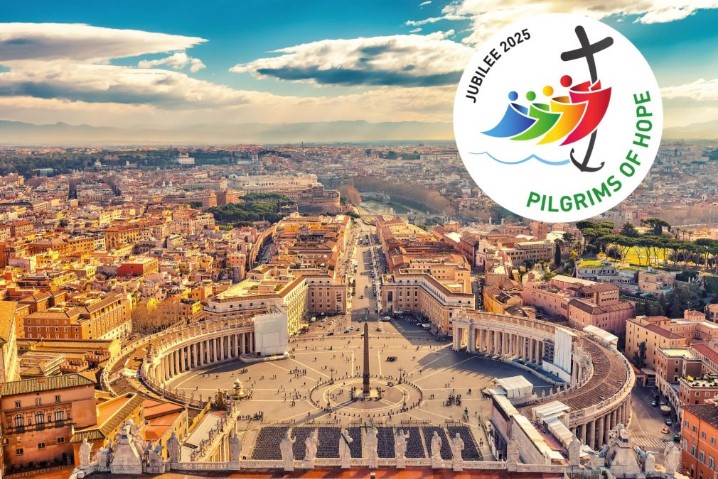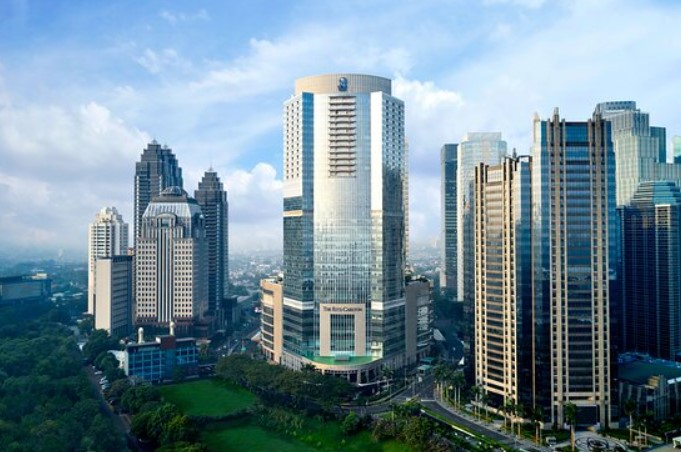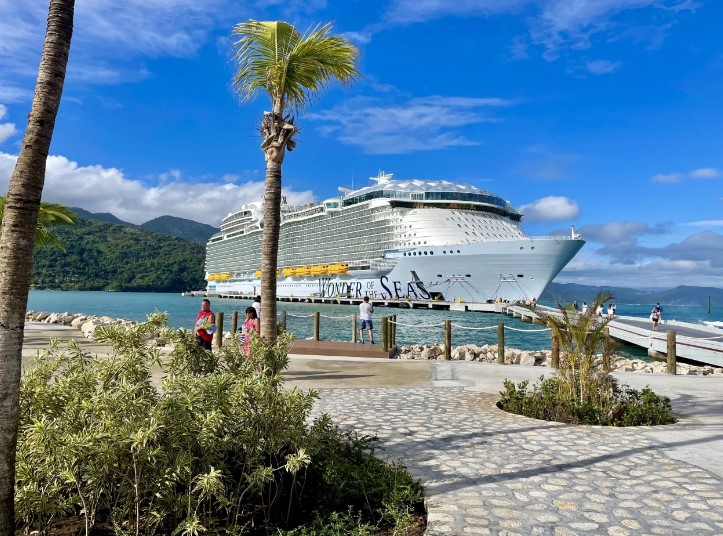This story first appeared in the Jan. 11, 2017, edition of Willamette Week.
Like a lot of Portlanders, Miyuki Hiramatsu got tired of the corporate grind.
After working 13 years at Columbia Sportswear, she wanted to slow things down. Her dream was to run a nice, little pub serving Oregon beer. She calls her place PDX Taproom, and it pours Ninkasi Tricerahops and Breakside IPA while spinning the Decemberists and Dandy Warhols. The bar is decorated with a replica of the Keep Portland Weird wall, a framed swatch of PDX airport carpet and a house copy of Willamette Week’s Beer Guide.
The twist?
The bar is in Tokyo—and it’s so popular on weekends you need to make a reservation.
“I thought my customers would be beer geeks,” Hiramatsu says. “It turns out, they were just people who like Portland.”
In Tokyo, Portland is an aspirational brand. There are more than a dozen Portland-themed restaurants, bars and shops in Tokyo’s Shibuya ward, a hip neighborhood that’s home to vibrant street fashion and is one of the only two wards in Japan to recognize same-sex marriage.
In fact, the frequency of Portland experiences in Tokyo can be dizzying. On a recent trip, on a winding back alley too narrow for cars, a row of teen girls in white pancake makeup and goth baby-doll dresses smoked cigarettes on the curb while slurping Portland-roasted Heart Coffee. Two blocks away, a wall of pencil-skirted women waited an hour for triple-decker pancakes at the Burn Side St. Cafe, where Instagram-ready salads come in Mason jars. H&M Harajuku sells half-tees emblazoned “Portland.” And at Stumptown Boots & Recrafting, decorated with ivy on the walls and home to an old-time cobbler, Japan-exclusive Danner boots are sheathed in a quilted rainbow of Pendleton wool.
The Japanese obsession with Portland shows up in our city as well. While Japanese tourism abroad has dropped by 13 percent in the past three years, visits to Portland are booming. According to statistics tracked by Visa—nearly 60,000 Japanese visited Portland in 2015, an increase of almost 50 percent since 2013.
The Mark Spencer Hotel, in Portland’s West End, has expanded from one to four Japanese-speaking staff members in the past decade. Local brewery bus tour company Brewvana runs regular Japanese-language tours. Last October, Toyoko Inn, Japan’s largest hotel chain, finalized plans to open its first U.S. hotel in Portland’s Old Town. One of the best-selling Japanese travel guides last year was about Portland, according to Amazon.
As California was once the sun-bleary fantasy of every farm kid in Kansas, and Paris the dream of wine-drunk suburbanites, Portland has become the dream life of Tokyo. There, Portland is a kind-hearted place where nature is never far away and everything tastes fresh, where money doesn’t matter and no one can tell you how to live.
“Nobody is in a hurry and I have no impression of being rushed,” reads a June 2015 article about Portland in Japanese magazine Fashion Snap. “Of all the places in all the countries I’ve visited, I think I’ve never said ‘hello’ so much. I never saw a serious or frowning face.”
:quality(70)/cloudfront-us-east-1.images.arcpublishing.com/wweek/B4QIVC2EGJFM5NORXNFVYZTPFE.jpeg)
Looking out onto the patio of his tucked-away Tokyo cafe, Daisuke Matsushima can’t help but feel a little responsible for Portland’s fashionability with Japanese.
A slight-framed, stocking-capped 31-year-old, Matsushima runs Paddlers, the only cafe serving Stumptown Coffee in Japan. He opened it in 2013, and the wood-heavy coffee shop serves meticulous French-press beans that were roasted in Portland only three days before. A bulletin board displays Tokyo events related to the Pacific Northwest, including an upcoming visit from folk musician Peter Broderick from Carlton, Ore.
Tokyo-born Matsushima moved to Portland when he was 15, graduated from Portland Lutheran School in 2004, and has become an unintentional cultural emissary. Mention a Portland business owner—John Taboada of Navarre, Joshua McFadden of Ava Gene’s, Wille Yli-Luoma of Heart Coffee—and Matsushima will almost invariably refer to him as a “very good friend.”
“People come in to ask me for recommendations of where to go in Portland,” he says. “Sometimes they want me to make reservations for them. It’s not really what I do—I run a coffee shop—but I call anyway.”
In early 2014, Matsushima pitched Portland to Tokyo magazine Popeye, a cross between a fashion magazine and Vice. “They had made city guides to Los Angeles and New York,” he says. “I said, ‘Why not make a Portland issue?’”
In July 2014, Popeye’s guide to Portland was published. It featured the Skidmore Bluffs and twee nooks like artisan candy shop Quin and brunch spot Sweedeedee.
“You see Japanese people walking up North Mississippi Street holding Popeye looking for the places in it,” a local official told the Portland Tribune at the time.
“Before that came out, I don’t recall, maybe there were 10 people from Japan,” says Dan Sloan of Everybody’s Bike Rentals & Tours, which rented a bike to the Popeye staff. “Now it’s probably about 100.”
To many in Portland, it seemed like a fluke moment of fame. Instead, it was only the beginning. Our city was mostly unknown in Japan when the Portland issue came out, says Matsushima, but soon found footing with a small coterie of tastemakers.
“I thought that the interest in Portland would last only a few months,” Matushima says. “But I have been surprised. It keeps on expanding.”
In the past three years, the Tokyo edition of Elle published a 100-page miniature guidebook to Portland tucked into the centerfold of the magazine. Fashion magazine Brutus also published a guide to Portland.
The same year Popeye’s guide dropped, design icon Teruo Kurosaki—who’d begun a Portland-inspired food-cart pod and farmers market in Tokyo the previous year—published a book-length guide to our city titled True Portland, praising what he calls our city’s “future vision,” a confluence of maker culture, ecologically oriented city planning and forward-thinking design. When it came out, True Portland became the best-selling Japanese-language guidebook of any kind on Amazon.
All of those fashionable productions had one unlikely thing in common: a distinctly unhip, scruffy-bearded former hippie named Jeff Hammerly, who runs Asian tourism for Travel Portland.
Hammerly—praised as a “guru” doing “extraordinary work” by nearly every local official we interviewed—worked in the Japanese TV business for a decade.
He says he doesn’t try to tell these Japanese publications what to write.
“I’m a middle-aged guy with an expanding waistband,” Hammerly says. “I don’t try to convince anyone what’s cool.”
But Hammerly does curate the experience that Japanese media have while they’re here. Travel Portland courts journalists around the globe, often arranging hotel stays, expensing meals and guiding writers on curated tours of Portland, taking them out for Swedish brunch, to crafty stores full of used wood, and to a bar that doubles as a laundromat.
Hammerly had been chasing Popeye for years before Matsushima’s pitch.
“It’s just critical mass,” says Hammerly, who says he got on Popeye’s radar by pitching a tiny lifestyle magazine called Paper Sky. “Popeye reads Paper Sky, and they were here with a team of six in 2011. It’s not wide circulation, but it’s hip.”
Hammerly previously had to court Japanese magazines to write Portland-related articles—as with a 2008 piece in the Japanese lifestyle magazine Coyote in which Gus Van Sant listed his 10 favorite Portland spots, and a Wieden+Kennedy exec hung out with ZooBombers. Now, he says, the magazines come to him.
The designer Kurosaki approached Hammerly in late 2013 with the idea of making a True Portland guide. The city of Portland put up about $50,000, and Hammerly got local celebrities like chef Gregory Gourdet to write essays. Kurosaki then sent 10 cool, young Japanese out into the city to have fun and take photos.
It worked: The first edition sold out its run of 20,000 copies in just a few months. The Portland brand had taken off.
“They think of it as a cool, hip, creative mystery box,” Hammerly says. “They don’t know what they’re going to find. Life in Japan is being told what you can’t do. But in Portland, they see young people who are able to wear what they want and build a life free from the limitations put upon them by corporations.”
:quality(70)/cloudfront-us-east-1.images.arcpublishing.com/wweek/GM7HGNCJAFCAJMXSK56SHVXGMY.png)
Meanwhile, corporations are getting in on the action.
Portland’s Voodoo and Blue Star doughnut chains have announced plans to open a combined 17 locations in Japan—each with more Japanese locations than it has the United States. Nike has a running lab in Tokyo. Columbia Sportswear has 66 outlet stores across the U.S., but now has 32 in Japan. Pendleton plans to open a flagship store in Tokyo later this year.
And it’s not just the usual suspects: Tiny Kerns restaurant Navarre was licensed by the Japanese twice, the first time in 2014, when a trend-obsessed lifestyle shop went on the hunt for a Portland restaurant to put in its store.
“They brought me to their headquarters [in Tokyo],” says Taboada, Navarre’s chef-owner. “The reception area was literally an exact replica of the Ace Hotel. They were very proud of it.”
That version of Navarre, which was turned essentially into a hot- and cold-plate cafeteria, did not succeed. But in May 2016, through some of the same partners, a much more faithful version of the restaurant opened again in Tokyo (see page 23 for reviews of Portland restaurants in Tokyo).
Japanese businesses have become so eager to bring Portland back to Tokyo that sometimes they just swipe them.
After Portland restaurateur Rick Gencarelli visited Japan in advance of opening a location of his Grassa pasta restaurant this fall, he surprised Multnomah Whiskey Library owner Greg Goodman with pictures of Tokyo Whiskey Library on his phone.
Tokyo Whiskey Library, run by a Japanese restaurant group called Edge, opened in October 2016 as a faithful re-creation of the Portland bar, a dark-wood hall of chandeliers, taxidermy, oil paintings and floor-to-ceiling bottle shelves serviced by sliding ladders.
But the two libraries are totally unaffiliated.
“It’s a compliment they did it, and they’re very nice people,” says Goodman, who visited Tokyo Whiskey Library in December. “I was surprised they didn’t come up with their own name.”
The restaurant trade hasn’t been just a one-way street. Portland and Japanese restaurants seem to be in a sort of exchange program, including three hyped Japanese ramen chains opening in Portland in the past two years.
Afuri opened a location in Portland, in part, because of the city’s desirable water quality, while Kizuki arrived to claim a beachhead for a planned expansion across the United States.
Marukin co-owner Hiroshi Kusuda says his company opened two outlets in Portland after enjoying his visits here.
“I got the vibe,” says Kusuda, a stout middle-aged man with squared shoulders, sad eyes and an easy laugh. “The westside is very fashion[able]. The eastside is very hippie. I like that. Because I was a hippie, too.”
:quality(70)/cloudfront-us-east-1.images.arcpublishing.com/wweek/WSN3SNZNDZCU7NJINEKUDQUAYY.png)
Oregon’s and Japan’s interest in each other is far from new. It goes back to 1848, when Astorian Ranald MacDonald, who’d heard wild tales of Japan, quit his job and sailed to Nippon to become the country’s first English teacher.
Our geographic position as the closest mainland city to Japan made Portland a hub for immigration, and until World War II Portland was home to a thriving Japantown along West Burnside Street. The area was dismantled after the mass internment of Japanese Americans during the war.
And in the 1980s—amid a decadelong boom in Japanese chip manufacturers opening plants in Oregon—the Japanese awareness of our state spiked because of a 13-year TV show, From Oregon With Love, about a Japanese teen sent to live in Central Oregon’s high desert.
But although more than 140 Japanese companies still do business in Oregon, with more than 7,500 employees, the Japanese economic collapse in the ‘90s took most of the chip plants with it. It took a long time for Japan and Portland to find each other again.
It also took an earthquake.
In 2011, the Pacific coast of Japan was rocked by the fourth most powerful earthquake since modern record-keeping began in 1900.
Waves more than 100 feet high smashed into coastal cities. The tsunami caused meltdowns at three reactors of a nuclear power plant. The island of Honshu, where Tokyo sits, was literally unmoored by the quake, migrating 8 feet to the east.
“For the last 70 years, Tokyo has been growing like hell. It’s all about production and high efficiency,” says Mitsuhiro Yamazaki, head of foreign investment at the Portland Development Commission. “But in 2011, the energy shut down, business shut down. They had weeks of not having enough water, not having enough food. Suddenly they realize, ‘Money is not what we’re after. Maybe making the best car isn’t the best thing. Maybe I should enjoy my friends and family.’”
Yamazaki, a svelte, suave 41-year-old wearing the unbuttoned collar and power jacket of the new Japanese business class, has literally written the book on the Rose City, a Japanese-language guide to Portland-style city planning titled Portland—Making the Most Livable City in the World, in which he introduces his native country to mixed-use buildings and design review boards. Although it was first published in May 2016, it’s already on its fourth printing.
Yamazaki recognizes that Portland’s fashionability is transient, but he believes there are reasons why the city’s popularity will continue in Japan, reasons that have to do with shifts in the Japanese culture.
“Japan is in crisis,” he says, “The population is aging, birth rates are low, and Japan has never been a huge fan of immigration. Young Japanese are moving away from small towns, and the social contract of working all your life for one company has become less attractive to the younger generation. Portland presents an alternative.”
Our small size is also considered a virtue.
“This is not a big town; [Japanese] don’t want to come to big towns—hustling, bustling, busy,” Yamazaki says. “Portland has open spaces, a sense of community. There are people on the streets in downtown, and people say hello to each other. It is a refreshing slower pace—cleaner, greener. There is local craft.”
“The people in Portland are very kind,” says Satomi Komazaki, who opened her Brewpub Pacific NW in October in Tokyo, serving beer from the Commons and Culmination alongside Komazaki’s favorite Portland brewery, Coalition.
“Kind” or “nice” are the words one most often hears from Japanese describing Portland. “No one thinks they are in competition with each other,” Komazaki says. “I think that’s the Portland spirit. Everybody’s in it together!”
:quality(70)/cloudfront-us-east-1.images.arcpublishing.com/wweek/SSFMYZA7GJAOBK2XOSTAFX2KGA.jpeg)
Japan is also investing acreage and cash in creating its own Potorando. Portland’s reputation for urban planning has become so entrenched that our city was invited to help build a 670-acre eco-city in our own image, in the northern suburbs of Tokyo.
The Kashiwa-no-ha Smart City, begun in 2011, is the largest ecologically conscious development in all Asia, a $1.5 billion LEED-Platinum megaplex of housing and shopping at the edge of a suburban university.
In 2014, Yamazaki persuaded developer Mitsui Fudosan to bring an urban design from our city aboard to put the “Portland touch” on the project by adding green features like bioswales and making street-level buildings inviting to the public.
“We told them, ‘A vital street is vital to your town,’” Yamazaki says. “When they saw it in action here in the Pearl, they said, ‘Oh my God, how do you do that? We want to make this entire area like the Pearl!’”
Yamazaki and the architects went to the residents of the development’s area in Japan, bringing an artist with a sketchpad.
“In Japan, there’s no requirement of public engagement,” Yamazaki says. “We mimic the Portland process. We ask people, ‘What do you really need?’ They say, ‘If there’s a coffee shop, I’ll bring my workers there.’ We draw that in a drawing. It’s something they’ve never experienced.”
So far, Smart City developers have completed only a few buildings, like a bookstore and a co-working space, and so the line of construction workers is long at the McDonald’s kiosk. Next to the construction site, a Smart City Museum is dedicated to a city that hasn’t yet been built.
:quality(70)/cloudfront-us-east-1.images.arcpublishing.com/wweek/BLWXG74N5NHFPEOW4K44MBC7QQ.jpeg)
On a cold Saturday in December, nearly 3,000 people traveled to a food-cart pod on the southern outskirts of Tokyo, a small collection of tents and trucks on the bricks of a luxury development whose apartments rent for $11,000 a month.
They came to “Feel Portland.”
Tokyo’s train stations were plastered with ads for the two-day festival, which showed Portland through the eyes of a fit, windbreaker-clad man gazing out on a city bathed in dreamy light.
This was among a handful of similar events that have occurred in the past three years—the PDC has put together three Portland pop-ups in Tokyo showcasing Portland artisans making recycled dog leashes or organic soap. In 2016, more than 4,000 people came to a Portland event held at a bespoke barge with sails designed by 2020 Tokyo Olympic Stadium architect Kengo Kuma.
At Feel Portland, a plaid-scarfed young Tokyo woman held out both hands to receive a creme brulee doughnut from a Blue Star cart next to a display of Steven Smith tea. Her boyfriend sipped an IPA tallboy from tiny Portland brewery Ex Novo, whose beer you can’t even find in Idaho.
Feel Portland was created to showcase Columbia Sportswear’s new heat lamp, which was installed in a huge tent.
But Columbia Japan’s Makoto Mizukami says he couldn’t just have an event for the lamp: “No one would come. People want to sample Portland—Portland food, Portland beers, all together.”
Columbia has been aggressive and creative in promoting its Portland identity. On Japanese station TV Tokyo, the footwear and apparel company has sponsored “Portland Life,” a curious series of five-minute segments about real Portlanders who live in idyllic balance between life and nature. Portland-via-New York-via-California folk musician Robin Bacior goes running. An upholsterer named Leland Duck goes fishing.
Portland continues to promote itself as home to quirk and freedom, including a Japanese ad campaign launched last September by Travel Portland depicting our city’s mascot as a huggable blue Sasquatch named Mr. Dude.
How long will the love affair with Portland last? The PDC’s Yamazaki believes the appeal of Portland has spread beyond tastemakers to “regular people.” As proof, he points to a Portland-themed issue of a Japanese magazine promoting life in small rural cities. “A 19-year-old college kid called my office,” says Yamazaki. “She asked me, “How do I live in Portland? This is where I want to spend the rest of my life.”
Matsushima, the coffee shop owner, says Japan’s ideas of Portland were always unrealistic.
“They see the nice food, the restaurants, the coffee. Everything is clean,” he says. “I’ve seen the other side of Portland. I had friends who were skateboarders; everybody had crappy little apartments and drank cheap beer. They don’t see that side of the city. Nobody lives like the people in Kinfolk magazine.”
Yayoi Yamamoto, a local consultant for Japanese businesses, believes the trend will pass as the Japanese people realize Portland does not live up to their utopian ideals.
“Japan’s image of Portland now is still stuck in the Portland of 2014,” she says. “It is still cool. But it’s not weird anymore. Japan is always on the hunt for what’s new and popular, and then they move on to the next thing. So next year it will be Europe maybe. Or Denmark.
ReplyForward





More Stories
This Phone Crossbody Is Perfect for Travel
Complete Guide To Croatia’s Medieval Seaside City
Universally Flattering Swimsuits I Always Pack